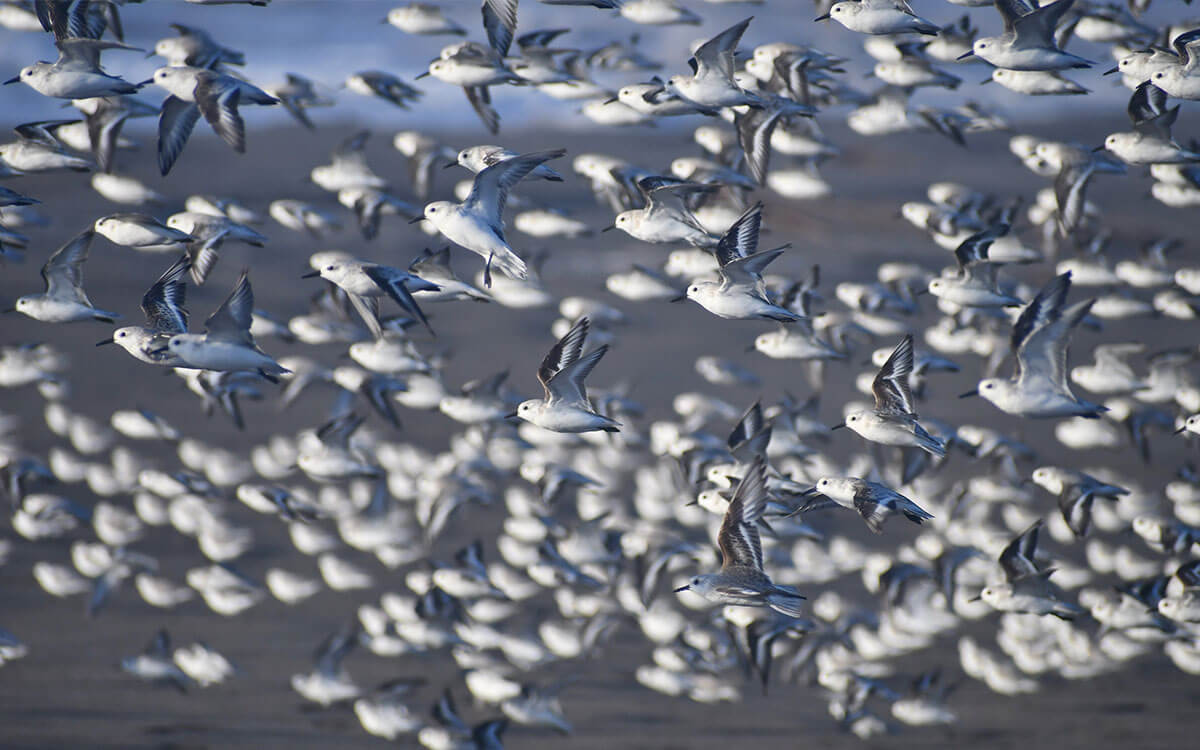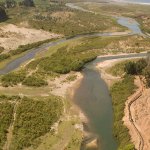The Pacific Americas Flyway spans 10,000 miles along the coast, from northeastern Russia and northwestern Alaska to southern Chile. Shorebirds that use this route cross 14 countries during their annual migratory journeys, making key stops to rest, feed, and transition between the Arctic tundra, mudflats, temperate forest estuaries, coasts, deserts, and mangroves, among other places. At least 11% of shorebird populations show long-term declines along this flyway.
Addressing the threats facing shorebirds and advancing their effective conservation requires a concerted effort across the geographies where different aspects of these species’ life cycles occur. International efforts are the fundamental pillar for implementing large-scale conservation strategies while enabling collaborative learning and exchanges about their implementation. In South America, Ecuador, Chile, and Peru play a crucial role in the flyway by providing critical habitats for several shorebird species. These three countries have formalized their commitments to shorebirds by developing and implementing their national plans to conserve shorebirds and their habitats.
In May 2024, the first meeting to exchange experiences between these three countries on implementing National Shorebird Conservation Plans occurred. WHSRN’s Executive Office facilitated the online meeting. It included specialists from government institutions of Ecuador, Chile, and Peru, such as the Ministry of Environment, Water and Ecological Transition of Ecuador (MAATE), the National Forest Service (SERFOR), the Ministry of Environment (MINAM), the National Service of Natural Protected Areas by the State (SERNANP) of Peru, the Ministry of the Environment (MMA), and the Agricultural and Livestock Service (SAG) of Chile. Organizations supporting the implementation of these national plans also participated, including the Network of Bird and Wildlife Observers of Chile (ROC), the Center for Ornithology and Biodiversity (CORBIDI) of Peru, Birds and Conservation of Ecuador, and Audubon Americas.
During the meeting, the Pacific Americas Shorebird Conservation Strategy was presented as a framework, and an analysis of the implementation of national plans in the three countries was discussed. Among the challenges highlighted by the analysis was the need to increase decision-makers engagement in the plans and the commitment to ensure sustainable funding in the medium and long term, strengthening the institutions and governance associated with implementing the plans, consolidating implementation groups and committees per country, and supporting the training and capacity building of human resources to implement the plans, particularly for ministry officials, local, regional, and municipal governments, were also identified as needs. Additionally, each country presented the progress made in implementing their national plans. The representatives in charge of presentations were Danny Guarderas, Focal Point of the Convention on Migratory Species (CMS) and Specialist of the National Biodiversity Directorate of the Ministry of Environment, Water and Ecological Transition of Ecuador; Lady Madeleine Amaro Giraldo, Specialist in Coastal Marine Wildlife of the National Forest Service (SERFOR); and Charif Tala, Head of the Species Conservation Department of the Ministry of the Environment of Chile.

Sanderlings (Calidris alba) breed in the Arctic and migrate along the Pacific Americas Flyway to reach the beaches and wetlands of Chile. Photo: Diego Luna Quevedo
Finally, a plenary conversation was held, during which possible areas of collaboration between countries were discussed and proposed, such as avian influenza in shorebirds, shared issues like feral dogs and vehicle traffic on beaches, and best practices and successful experiences in management, governance, and community involvement.
Based on the proposals from the exchange participants, the WHSRN Executive Office is designing a short-term cooperation and exchange agenda. The possibility of formalizing the collaboration between the countries through a memorandum of understanding focused on shorebird plans will be explored.
The exchange between countries of the Pacific Americas Flyway is driven by Manomet Conservation Sciences with to the support of the Packard Foundation and the Neotropical Migratory Bird Conservation Act (NMBCA) of the U.S. Fish and Wildlife Service.
Cover Photo: Sanderling (Calidris alba). Photo: Alan Kneidel.






